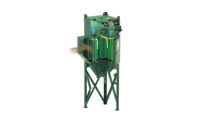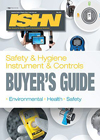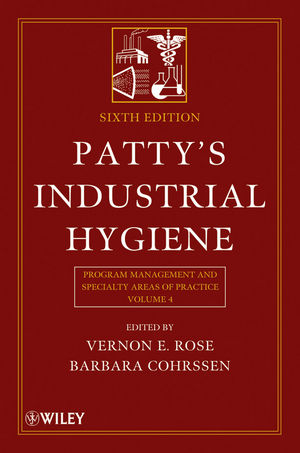In industry, hoses, cords, and cables are used to direct vital fuel, fluid, air, water, and electric resources where needed. This occurs not only in manufacturing and maintenance facilities, but also in mobile field service applications. But while hoses, cables, and electric cords are a key part of operations and power tools, they can pose a considerable trip and fall hazard if not properly managed.
“Slips, trips, and falls constitute the majority of general industry accidents,” states OSHA’s website. “They cause 15% of all accidental deaths, and are second only to motor vehicles as a cause of fatalities. An OSHA Pocket Guide safety checklist warns operators to keep “floors and aisles…clear of clutter, electrical cords, hoses, spills and other hazards that could cause employees to slip, trip or fall.”
To keep hose, cords, and cables safely up off the floor, conveniently stored where needed, reels have been developed. The reels allow hose and the like to unwind from the reel as needed, and then retract after use. This prevents tangling and a potential trip hazard while minimizing required storage space. The reels are typically spring-driven, hand cranked or motor driven.
But typical reels can present hazards as well. For instance, when an operator lets go of the hose, cord or cable, some spring-driven reels recoil them so quickly that they can act like whips. In such cases, they can retract as fast as 25-feet per second. This can produce a whipping action of 5 to 15 feet of length that can lash people or machinery with up to 500 ft. lbs. of force. The danger is greater when the hose, cord or cable ends with an attached metal nozzle or tool that intensify the impact.
Other reels may lack needed structural strength, stability, or alignment, and may prematurely wear the hose, cord or cable. This could jeopardize operator safety and production.
Fortunately, ongoing reel innovation has improved industrial safety and performance. Advances in hose, cord, and cable reel design have, in fact, made handling vital resources safer and more productive for operators.
Enhancing Industrial Safety and Performance
“Whether reels are mounted on ceilings, walls, or floors, they can help industrial users get the job done safer and more efficiently,” says Buddy James, Purchasing Manager in Fort Worth, Tex. for Stuart Hose and Pipe Company, a hose and pipe stocking distributor in the Southwest. “But it’s important to know what to look for.”
For industrial users considering a spring-driven reel, James recommends using a reel with controlled retraction. Controlled retraction is a safety innovation that slows reel retraction to a safe rate, such as that on EZ-Coil equipped models by Coxreels, a Tempe, Ariz.-based manufacturer and innovator of industrial-grade hose, cord, and cable reels. Established in 1923, the company recently celebrated its 90th anniversary.
Unlike spring-driven reels which can retract hose, cord, or cable as fast as 25-feet per second, with whipping of 5 to 15 feet of length, and up to 500 ft. lbs. of force, EZ-Coil reels retract up to 80 percent slower. By retracting at a safer 5-feet per second, this eliminates the whipping hazard. It reduces whipping to 0 to 1 foot of length, with just 0 to 1 ft. lbs. of impact.
“Reels with controlled retraction like EZ-Coil act like a safety net that reduces trip, fall, and whip hazard on busy production floors,” says James. “The reel retracts unneeded hose after use to prevent trip and fall risk. If an employee drops the hose, or if it gets pulled out of his hands, it will not fly across the workplace hitting people, machinery, and objects. It will retract back slowly just as if it were being walked back.”
On hand-cranked reels, one safety innovation has been to improve structural integrity by eliminating the possibility of bolts loosening and falling out. One way this is being accomplished by manufacturers such as Coxreels is by robotically CNC welding the reel’s entire steel frame as a single piece that will not loosen or require maintenance over time.
A related safety innovation is to enhance hand-cranked reel stability with a steel “A” frame. Typical reels require other parts of the reel such as the barrel, discs, or plumbing for support. But these elements of the reel can get out of alignment, particularly in high use work settings, jeopardizing safety and stability. Reels that use a steel “A” frame are safer and more stable because need no other support; they are their own support system.
To enhance safety and productivity, LDJ Manufacturing, a Pella, Iowa-based manufacturer of diesel fuel and service trailers, uses a variety of reels in production and on its service trailers. In production, reels are used for electrical cords and for air, oil, and lubricant hoses.
“A simple trip or fall can turn into a tragedy,” says Loren Van Wyk, Founder and President of LDJ Manufacturing. “In production, we use reels to keep cords and hoses safely out of the way until they’re needed, then retract them as soon as the job is done. The reels help us stay safe.”
Most of the reels used in production are wall mounted, so the production floor is clear for other uses. “Because the hoses and cords are out of the way until we need them, it’s safer and we’re able to put every square foot of our production floor to good use,” says Van Wyk.
Van Wyk appreciates that the Coxreels reels he uses have CNC spun discs, with all steel rolled edges for added safety. “The reel edges are rolled, not stamped,” says Van Wyk. “They’re safer to touch and safer on hoses and cords than sharper stamped edges.”
The company also uses reels for a variety of hoses, cords and cables on their Thunder Creek Equipment brand of fuel and service trailers. Reels are used with hoses for air, glycols, engine oils, hydraulic oils, electric cords, transmission fluid, and diesel exhaust fluid (DEF). On sophisticated service trailers, reels are even used with welder cables, jumper cables, and acetylene torch hoses.
Because the service trailers are intended for demanding, off-road use, the company uses reels with a dual axle support system from Coxreels. Compared to single axle systems, the dual axle support system increases safety and stability during operation, reduces vibration, and strengthens the structural integrity of the reel.
“Our customers appreciate how the reels improve their safety and productivity as much as we do,” concludes Van Wyk.
For more info, call toll free 1-800-COX-REEL; Fax toll free 1-800-229-REEL; email info@coxreels.com; visit www.coxreels.com; or write to Coxreels at 5865 South Ash Ave., Tempe, AZ 85283.




